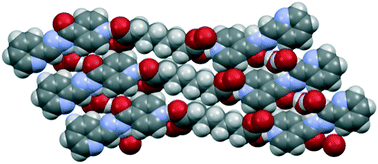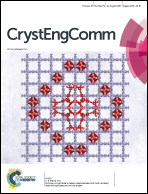Exploring binding preferences in co-crystals of conformationally flexible multitopic ligands†
Abstract
A series of conformationally flexible, bipyridine-based ligands were co-crystallized with nine aliphatic dicarboxylic acids of varying carbon chain lengths. Multiple hydrogen-bond acceptor and donor sites on both the ligands and the dicarboxylic acids increased the potential for cocrystal formation. The calculated molecular electrostatic potential surface (MEPS) of each bipyridine species was used to predict hydrogen-bond preferences in two ways. First, a comparison of different conformations of the same ligand revealed which conformation had the lowest total energy and, second, the maxima and minima on the potential surfaces allowed the potential hydrogen-bonding sites to be ranked with respect to each other. Pre-screening by infrared spectroscopy (IR) showed that all 36 experiments produced co-crystals and thirteen of these were crystallographically characterized. Structures were grouped by ligand, hydrogen bonds identified and analyzed for patterns within structures and within ligand groups. Direct comparison of the electrostatic potential charges of ligands with propensity of formed hydrogen bonds underscores that the vast majority of intermolecular hydrogen bonds tend to take place between best hydrogen-bond donor and acceptor sites (as ranked by the electrostatic potentials).



 Please wait while we load your content...
Please wait while we load your content...